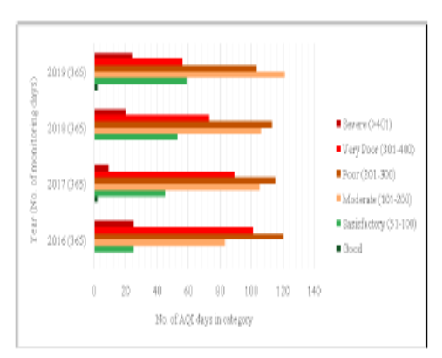


Indian Journal of Science and Technology
DOI: 10.17485/IJST/v17i28.1117
Year: 2024, Volume: 17, Issue: 28, Pages: 2903-2913
Original Article
K V K Sasikanth1∗, B Sujatha2, D Haritha3
1Research Scholar, JNTUK, Kakinada
2Professor, Dept. of CSE, Godavari Institute of Engineering & Technology (A), Rajahmundry
3Professor, Dept. of CSE, University college of Engineering, Jawaharlal Nehru Technological University Kakinada, Kakinada
*Corresponding Author
Email: [email protected]
Received Date:16 April 2024, Accepted Date:01 July 2024, Published Date:22 July 2024
Objective: The purpose of this study is to design novel approach to predict air pollution indices accurately using hybrid approach in highly populated cities of the world. Methods: This study aimed to address the significant bottleneck of relying on a single model for time series analysis which we accomplished by developing a hybrid forecasting method. This blended method combines the advantages of CNN (Convolutional Neural Networks) and LSTM (Long Short Term Memory) hybrid model together, overcoming insufficiency of air pollution prediction. Findings: Due to the empirical operation that revealed in achieving proper predictions we have come to understand that relying on a single model for the estimation of time-series data results is inefficient and misleading, mostly due to the non-linear nature of raw data. On the other hand, by using this hybrid model forecasting, we can uncover more detailed patterns through longer period of time and predict them more accurate by using weather and air pollution related data.The hybrid CNN-LSTM Model achieved least values of 6.742 for MAE,12.921 for RMSE compared to other approaches, which indicatesmere perfection. Novelty: The novelty of our approach is to fuse LSTM and CNN models in order to perform exhaustive analysis on the dynamics of the air pollution throughout the entirety of the city. Through the combination of these two models, such a tool is made simpler to use, and there is an improved accuracy in predictions. This thus becomes a promising tool in the fight against air pollution in cities that have a very high population just like Delhi.
Keywords: Air Pollution, LSTM, CNN, Deep Learning, Time Series Analysis, Nonlinear Relationships
© 2024 Sasikanth et al. This is an open-access article distributed under the terms of the Creative Commons Attribution License, which permits unrestricted use, distribution, and reproduction in any medium, provided the original author and source are credited. Published By Indian Society for Education and Environment (iSee)
Subscribe now for latest articles and news.